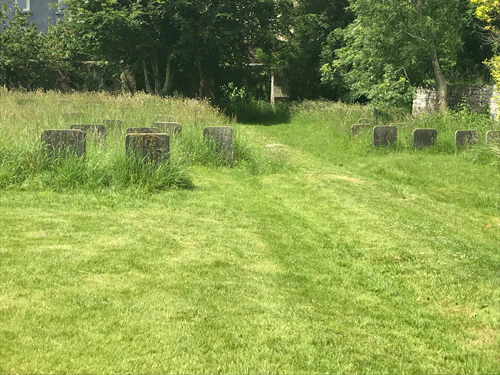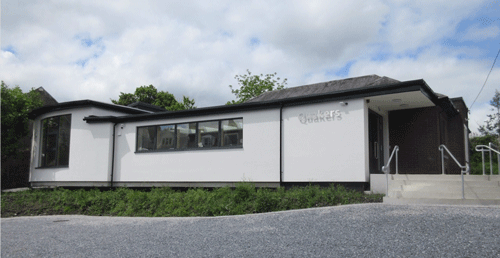Quaker Meeting House and Graveyard
| Address | Summer Hill South, Ballintemple. |
Open 12pm to 4pm
The Quaker religion was first brought to Cork in 1655 by two young Quaker women, Elizabeth Fletcher and Elizabeth Smith. The new Quaker community purchased land to use as a burial ground at Summerhill South. The first interment was in 1668, and this burial ground is still in use today. All the grave stones have the same shape, size and lettering, as a testimony to the Quaker belief that all have “that of God” within and so are intrinsically equal. The Quaker Meeting is currently leaving parts of the burial ground unmown to promote biodiversity.

The original Quaker Meeting House was built on Grattan Street in 1678, and was expanded and rebuilt over the years until it attained its current form in 1834, when there were several hundred Quakers in Cork. Due to a declining Quaker population over the next hundred years, the Grattan Street Meeting House was sold and a new, smaller Meeting House was built in 1938 near the 17th century Summerhill South Burial Ground.
The number of Quakers in Cork began growing again in the 1980s, and there are now about 160 people in the Cork Quaker community. The 1938 Meeting House has recently been renovated and extended, particularly aiming to ensure the space is accessible to all and is as sustainable and energy efficient as possible.

The original 1938 Meeting House was left intact, with a new extension and linking space wrapped around it. The interior spaces are designed to be light and airy. The original Meeting Room and Library retain their original character, while being lighter, more comfortable and quieter due to improved windows and insulation.
In addition to being used for Quaker Meeting for Worship on Sunday mornings from 11–12, a variety of community groups also use the space during the week.
Local Quakers will point out salient features of the Quaker Meeting House and the adjacent 17th century burial ground.

